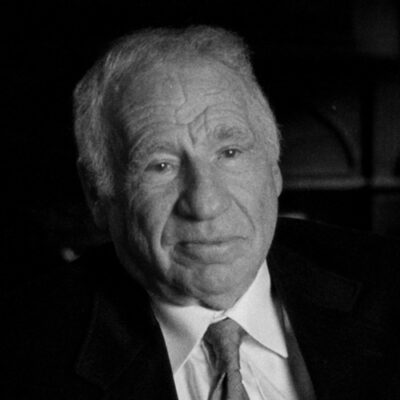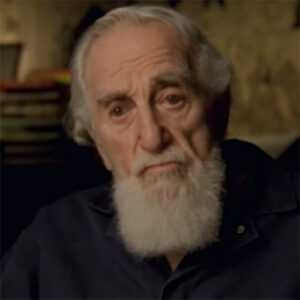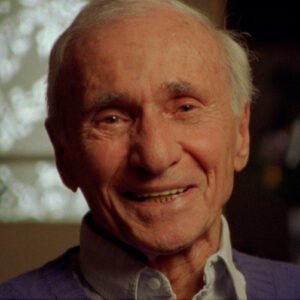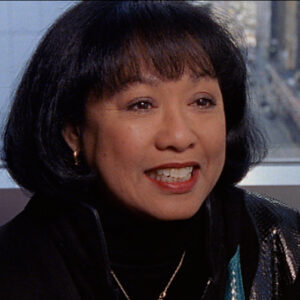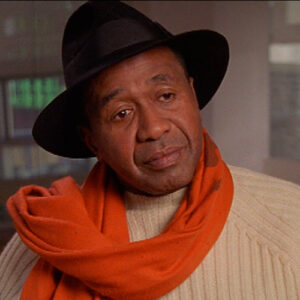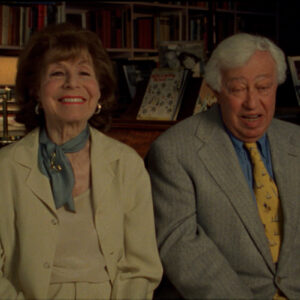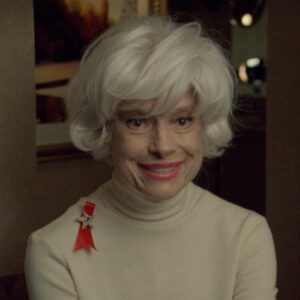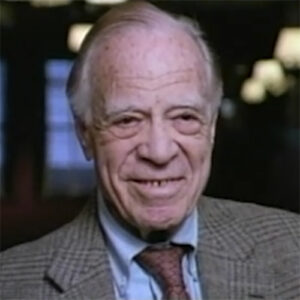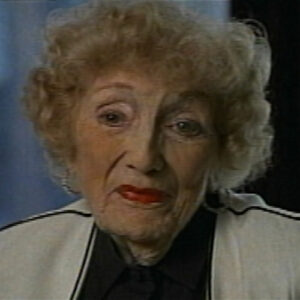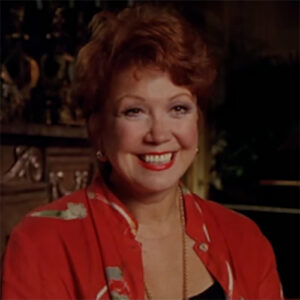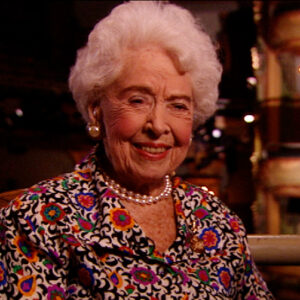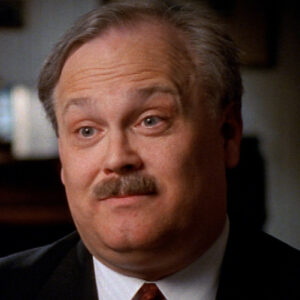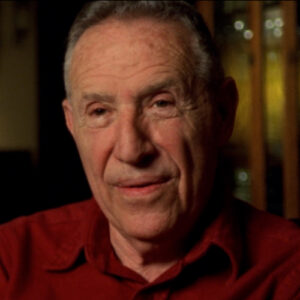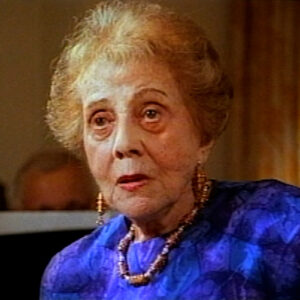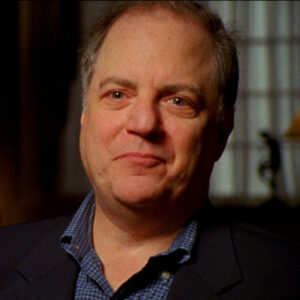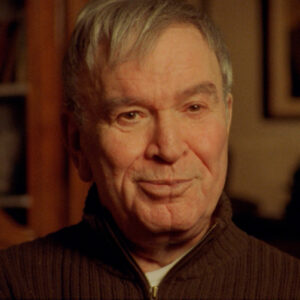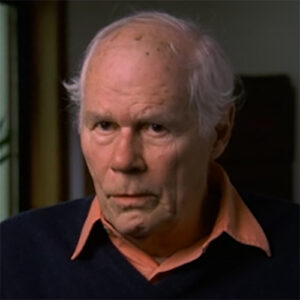Michael Kantor: One of the things you wrote, which I don’t think anyone understands now, is that the minstrel show was the most important form of American live entertainment in the 19th century. Help us understand that and why it was important and how it was indigenous and how it feeds into the Broadway, what will become the Broadway.
Ann Douglas: The American minstrel tradition is really the center of most American popular musical entertainment, at least till the advent, you could say, of rock and roll. And, of course, it begins as whites impersonating blacks, and then blacks, in a sense, impersonating themselves become part of the mix after the Civil War. And it’s in the minstrels shows that you have the year of distinctly American forms of dance and music. Mainly but not all derived from black American culture. Often a mix of varied American forms, which is to say varied forms that incorporate European elements. The minstrel show is so characteristically American in part because it’s such a mix and such a mingling and such kind of grab bag of traditions. At the core are at least white ideas of black performance, and a little bit later, absolutely, you know, black performance tradition. Though since the blacks are coming into minstrelsy really after the whites, they are also playing with the images and sounds of blacks as understood by whites. So you get a kind of series of impersonators. And that’s an American tradition. This is a country where identity is not fixed, certainly compared to Europe. And in the 19th century when minstrelsy is developing, that was the only comparison anyone ever made who was thinking about American culture. So this is a way of spoofing European art and throwing all the different European strains together. If you look at minstral songs, they use Irish melodies. They use German drinking songs. They use French, what would become a kind of operetta tradition. The different nations were kind of classified ethnically, as we would say today, by particular forms, Thomas More and Irish melodies. Well, and then of course, you’ve got snatches of spirituals. You’ve got ragtime coming in, a black form that uses white forms as well coming in. In the cities of the states in the 1880s, 1890s. And it’s throwing all those together. You know, getting the Virginia minstrels singing an Irish song with a French chorus often done as a spoof. So, minstrelsy is a way for the unfixedness of American identity to turn itself into an art form, which is exactly what happens. And it’s also a way of looking at America’s betters, culturally speaking, Europe, England, and so on, and saying, hey, we can do that. In fact, we spoof it. We can make fun of you. So appropriating American culture by translating it into a variety of American vernaculars, the most important one being black, that’s the core of minstrelsy.
Michael Kantor: Who would you identify with as a sort of chief performer of the cakewalk?
Ann Douglas: George Walker, Burt Williams.
Michael Kantor: I’ll be in here.
Ann Douglas: Well, George Walker and Burt Williams, a terrific vaudeville, black circuit, and eventually Broadway dance and song and comedy skit routine couple, they really put the cakewalk on Broadway in the late 1890s. Now, the cake walk was a dance for ragtime music. And ragtime, the vogue on which Irving Berlin would sweep to fame and revolutionize Broadway. Ragtime music was itself so popular and here was the music you did to it. But again, you have this layer of pretense. The cakewalk, as a number of black authors and critics have pointed out, was originally a dance done by blacks, presumably in plantation culture, spoofing their white masters, imitating their pretensions. So it already has this democratic idea in it, which is, let’s take the high. And make it low. And then let’s make the low an art. The idea of the high low brow is right there in ragtime and cakewalk.
Michael Kantor: What was the cultural significance of Lillian Russell? And the way that, beginning at that point, the stage can begin to define standards of beauty and there’s the actress as celebrity and so forth. Tell me about, who was she?
Ann Douglas: Lillian Russell is the most important of a big wave of American women actors that really in the minds of some critics inundate the stage starting in the 1870s and really booming by the 1880s and 1890s, which are of course Lillia Russell’s heyday. And in many ways, she’s a progressive figure. I mean, she is a comedian as well as a vocalist. She is used as a comedian by Weber and Fields, the great team of the day. And she’s on top of the game, if you see what I mean. And in many ways, as a woman, as an actress, she’s a new kind of figure, she’s suffragette. She runs for mayor of New York at one point. She says that she imbibed suffrage with her mother’s milk. Her mother was a reformer. Um… She had a very independent life she had lovers she had debts she had lots of diamonds as as we all know and her persona you know was in some ways an anticipation of Mae West like Mae West she’s in control of her own comedy and in some way she’s an icon for what at least we would call feminism she takes up exercising she bicycles and helps create a craze the bicycle is new in the eighteen in the United States. She gets interested in dieting. Dieting is a new idea, actually, that doesn’t have a real widespread vogue till the 1920s. She wasn’t successful for very long at her diets. You know, she was the first of those, isn’t this dramatic, Lillian is so fat in this play, and she’s a little like Judy Garland, say some 40, 50 years later. But in any case, at the same time as her career goes on, she becomes a figure of fun as well, meaning she survives on into the 20s. And there she is seen not as the more progressive figure that she in some way was, but as obsolete, as old fashioned, as someone who doesn’t really get the modern joke. In some sense, she is, of course, different from, but she has things in common with Margaret Dumont, who would be the straight woman for the Marx brothers. And Groucho Marx always loved to say that Margaret Dumont was not acting. She didn’t get the jokes. She was really a straight woman in life. And some of the 20s observers of Broadway and Broadway people saw Lillian Russell that way, too, as kind of now in a comedy that she was no longer in control of.
Michael Kantor: Burt Williams, let’s go back to him for a second. How did he manage to win white audiences?
Ann Douglas: Burt Williams, of course, was this very complicated, highly educated man, born in the West Indies from a good family. He teamed up with Eddie Cantor in the Ziegfeld Follies, and Eddie Cantr said that basically he was the high class gentleman, Burt William, and that he was, the street kid, the one who was picking up black dialect, you know, running around the Lower East Side as a boy. So that there were a lot of reversals built into Burt Williams’ performance. And of course, he blacked up. He really had to. He was hired by Ziegfeld in 1910. And it was a complicated transaction in that some of the other all-white Ziegfel performers did not want to be working with him. He himself had a clause in his contract that he would not appear on stage with the white Ziegfeld beauties and girls, meaning He knew just how problematic that was. He really was a hit with white audiences. And part of the reasons was that he was just a kind of genius of comedy. You know, he had this impeccable, behind-the-beat timing. There are real hints of the talking blues, if you listen to the records of his delivery. He’s someone, a little like George Cohan, around the same time. He’s talking his lyrics rather than singing them. But unlike Cohen, who’s very obvious really in terms of the rhythm and where he’s hitting on the beat, he’s actually playing around with the beat of the song so that the songs feel like songs even though he’s barely singing because he’s so rhythmically astute. But I think the other reason he was so appealing to white audiences was that he had this real, more than a trace, this real mood of sorrow. And depression. There was a kind of buried in his hit signature song, Nobody, which he was always asked to sing and, you know, got tired of singing, but it was kind of, you now, who helps me when I’m down and out? Who gives me food? Nobody. Nobody. And there’s just a little hint that someday he’s not going to do anything for Nobody himself, so that he’s both saying I am a black man and I am depressed in this society. And there’s a little hint, and someday, I may stop playing your game. W.C. Field said that Burt Williams was the funniest performer he ever saw, and the saddest man he ever knew. And Burt William had this kind of melancholia. And a lot of people say, well, of course, of course he was depressed. You know, here was this distinguished person blocking up, you know, playing darky stereotypes. I tend not to believe that myself because why wasn’t his partner, George Walker, who was the chocolate bomb ball, who was a spark, who a figure of great dash and excitement and a little boy like Langston Hughes growing up in Kansas where George Walker came from. He just wanted to go to New York and be like George Walker and have so much fun. And Walker was subject to the same constraints that Burt Williams was. In fact, if anything, he ran into more personal violence himself because he, you know, in one telling of it, he was a troublemaker. He was gonna get more attention when he was out on the town. So I think, you’re talking about someone who’s fundamentally displaced a number of times over from the West Indies, yes, from his class background, which is a much more elite one than George Walker’s. But I think also that’s his genius as a performer. He is the melancholy, he’s the sad clown, not the fun.
Michael Kantor: How did Burt Williams die and what was his legacy?
Ann Douglas: Williams died, as far as we know, basically of alcoholism and some complications. And again, his lawyer always said that Williams actually had radical views about race and society. You know, he didn’t talk about these. This was a man who didn’t disclose a great deal of what he really felt and thought. So what his state of mind was, you know, I don’t think we can really be sure. His legacy of course was that he was the most important single black performer until that time. He’d been on Broadway, he’d been a huge hit in Europe. He’d pushed race boundaries when he and George Walker appeared before the King of England at the court of St. James and sang Every Darkie is a King to applause. This was a new kind of conscious daring when you’re talking about Burt Williams. He always knows what he’s doing. He’s a very self-conscious performer. So he set new marks for black musical, theatrical achievement. And of course, right around the time he died, just before he died Shuffle Along opened.
Michael Kantor: What did a journalist from Chicago say about America and the force of its popular songs around World War II?
Ann Douglas: Well, Ben Hecht came from Chicago to New York during the First World War. And he was very struck by New Yorkers’ relation to their popular, usually theatrical, music. And he said that New Yorker’s believed that a war could be won by writing the right song for it. And of course, George Cohen, whom the war brought to new heights of favor, because he had always been a patriot and he was Yankee due to landy after all, He actually wrote that song. Over there about the First World War, which was sung by doughboys throughout Europe. James Reese Europe, do I mean James Reese, yeah, I do, sorry. Yeah, yeah exactly. Anyway, James Reese-Europe who was doing a somewhat different kind of music than George Cohen, but nonetheless he belonged to a military band in the First world war. He was touring Europe. He would come back to New York. He would tutor. He had already tutored the castles. He would die, unfortunately, not long thereafter. But he’s another New Yorker, a very important black New Yorkers who also thought war, music, a linkage that really persisted, probably up until Korea. The Broadway musical comes out of a grab bag of influences. It’s unthinkable without the minstrel show. Which it evolves partly out of. It’s, of course, unthinkable without the European influences, perhaps European operetta, most of all, and various other American native comic ethnic traditions, particularly Jewish Eastern Europe, German Jewish traditions. So, again, like Minstrelsy itself, it’s throwing together a lot of… Different ethnic, national, high and low cultural elements and you could see the Broadway musical in a sense as a kind of struggle between some of these elements. I mean first the Irish are perhaps the biggest ethnic group, Harrigan through through Cohan, then the East European immigrant, largely Jewish, certainly Fields and Weber and on through a whole host of songwriters and and lyricists and comic actors and performers on through. And then, of course, the African, the African-American strain, which is there almost from the beginning. And by around 1910, these three really major ethnic race groups have begun to collaborate with each other, not necessarily literally together, we are working on a production, but borrowing from each other. Blacks from Irish and vice-versa. I mean, Harrigan talks early about, you know, our black brothers and the Irish. We’re the first. And they did, you know, they had that edge. But as they saw it, they lost out to the Eastern European Jewish group. But I think more important, even in the competition for the Broadway musical, as opposed to for American society, is the collaboration. Sometimes at fairly close quarters, as one would see, you know, in the end of the 20s with George Gershwin and Fats Waller really trading ideas in the same room at the same instrument. Or, as I say, just by going to each other’s shows, buying the sheet music from each other musical productions. So that it’s the ethnic collaboration that makes the musical different from any of the places where its influences are coming from. Isn’t that there’s a class mix, let’s say, in European and English musical, opera buffet, at least the productions themselves involve class conflicts. There are different groups involved, say, among the African community, but what’s really unique about the Broadway musical, and it is the Broadway Musical, this is New York, the real melting pot if there was such a thing. That this country ever had. It’s the big port. It’s Ellis Island. It’s where everyone’s coming through and many of these groups or at least the first waves of them are settling. So New York becomes a place of encounters and collisions among groups that in the world from which they came virtually never saw each other, much less made culture together. And that’s the indispensable ingredient of the Broadway musical, Is this? Internationalism from the very first Broadway musical, if we want to say it’s the Black Crook from 1866. It’s French, it’s German, it’ American, it has some Irish elements. It is throwing the whole hodgepodge together. Well, again, Broadway is this mix. Broadway is the Broadway that was supposedly an Indian trail. The first possessors of the Isle of Manhattan that supposedly dimly comes from some Indian name. Anyway, so Broadway starts out as so many things in this country as something that white Europeans and eventually other groups find that is already there and they’re going to change its meaning. So it is still the Broadway, it is still the main street of what we’ll… Become by the early 19th century the largest city in the United States. But of course, as it became more and more a theater district, originally way downtown, and then moving up, Broadway also meant the place where you show yourself off. It’s the place there’s room for show time. It’s where you can, in one part of town or another, you can put on the ritz. Of course, there also came to be plenty of jokes about the broads. On Broadway, meaning the girls, the showgirls, the ladies of the night who are also broads on Broadway. The name itself becomes a kind of motif that people can play around with, but it also becomes a place where musical fortunes are as volatile and risky and exciting as economic fortunes on what would become Wall Street. Broadway is a place about gambling. Broadway is where you take your chances. Moss Hart writes wonderfully about this in his autobiography when he has his first smash hit, not a musical, but a comedy with George S. Kaufman who, of course, is going to be involved with some of the most exciting musicals of the period. Anyway, and he realizes that the city is his. You know, he owns Broadway. George Cohen, the man who owned Broadway. Who was always doing these autobiographical titles. Broadway is a place of gambling, of speculation, where fortunes are made and lost. And this is part of the Broadway musical, too. The Broadway musical is, it’s about moods. It’s about being up, and it’s being down. It’s being Cinderella, you know, who rises to the top and falls back down again, perhaps. It’s a balance of optimism and disillusion. And there’s a rhythm between them. They need each other. So that even when you have a composer, writer, producer, director, actor like Cohan, who’s basically up, you know, up tempo, up in mood, up and everything, and yet you don’t really want him without knowing that at the same time there are at least sadder strains playing on Broadway. It’s the fundamental attraction of the Larry Hart. And Richard Rogers, who both of them have sadness. But Larry Hart has that, you know, that disillusion, that really sharp urban wit that, you know can’t help but see the downside of things. And then Roger’s music pushes it up sometimes so that even within a single production, within a sing song, these darker, lighter, happier, you, you know, everything’s going to go my way versus… Lonely room and nothing to go on to Oklahoma, nothing’s going to go my way. Those are always part of the Broadway musical, and it’s connected to this economic risk that Broadway always represented.
Michael Kantor: Why in the 20s were there so many Cinderella stories?
Ann Douglas: There were a lot of Cinderella stories, particularly in musicals, in the 1920s because, of course, it was the first age of a huge Wall Street boom. And people often forget that it wasn’t just one big boom from, say, 1921 to 1929 when the crash comes. Instead, it’s up and down, up and, down, you know, big depression in 1921, you in the middle, another dip down in 1927. And whoops, you know, it’s coming up again. Everything’s going to be fine. So that fortunes were really being made overnight. F. Scott Fitzgerald, who was doing very well as the novelist of the lost generation in the 1920s, he talks about realizing at one point that his barber is now richer than he has because he’s been investing in the market. So that since your barber, you now, could be the person that you were paying court to tomorrow. That was really happening. In New York at this time. So, in a way, no wonder Cinderella stories, which have always, you know, Cinderella is just a version of Horatio Alger. George Cohan, the guy who invented the Horatia Alger story, at least made it a real genre for the Broadway musical. Both of them, it’s a woman coming up, which, of course, they’ve always been, you know the heroines who were discovered to be the daughters of the aristocracy. But what’s a little different about some of these figures? Like Sally and others in the 1920s is that they’re getting there, these girls, by their own grit and by their own pluck, you know, what Shirley Temple is going to be, partly an homage to and partly, let’s face it, a kind of decline from this figure. But that idea of the spunky girl, who again has been there since David Belasco and Girl of the Golden West, but nonetheless, it’s really becoming a common type that the can make her fortune, too.
Michael Kantor: What do you think is the single most important Broadway musical in the 20s and why?
Ann Douglas: Shuffle Along is so important because it’s an all black produced, all black written, black directed, black acted, everything about it is black and it’s playing on Broadway. The first time an all-black show had done so since the 1900s because there had been the big upsurge in white blackface with of course particularly Al Jolson kind of pushing the black performers aside. And other reasons as well. Anyway, so it’s a kind of return to what had really just been a dawn that didn’t quite happen in the 1890s. But more than that, of course, you know, it’s really on Broadway after touring for, you now, what seemed like years before it got to Broadway. And although it’s uptown Broadway, 62nd Street, that’s still Broadway. The prices are Broadway. The audiences are Broadway, the critics eventually all come and, you know, rave about it. It’s a big Broadway show. It made a number of black performers, the most famous of whom are probably Josephine Baker, is Josephine Baker, but you know half a dozen people whom you’ve heard of. Um, it’s was the first big production of one of the great songwriting teams in American musical theater in any group, which of course was U.B. Blake and Noble Sissel who’d been working together for a while when they got this really big hit. And it served as not only to kick off a host of imitations and 20 black musicals musical reviews in the course of the 20s after it. But it was so influential on white productions. And again, if you, you know, if you look at many white musicals and reviews before 1921 and Shuffle Along, you can always find black influences in the follies, as with Burt Williams at least, you can find a black performer. What’s different is that everyone knows this is a black influence, that Ziegfeld is asking in the dancers and singers and performers. From a shuffle along to teach his own chorus girls. When Julian Mitchell has a job with Ziegfeld, he’s there because he’s the best choreographer. Even Will Votary is there because he’s black, but he’s not to instruct them specifically in black culture, but because he is so good at what he does. This is, they’re the best and they’re black and we need to learn from them. We need to come calling, perhaps not with hat in hand, but it’s the miscegenation of American culture, the only part of American life that really has ever been miscegeneated is musical culture. That’s always been there, but it is a very different matter when it’s recognized that blacks are a key influence. Some people, a few people even knew they were the key influence, they were even the originators. That is to briefly, this didn’t hold. That’s a story of black achievement in the musical theater as elsewhere in the arts. These amazing plateaus of achievement are reached and then there comes an economic recession, there comes a change in the political climate and it’s rolled back and almost erased. But it’s not because the pool of performers remains.
Michael Kantor: Briefly it’s not just you’re talking about recognition. It’s not appropriation, but the 20s are all about sort of cross fertilization
Ann Douglas: Yes and Shuffle Along itself, some people are unhappy with this, it resurrects a lot of the minstrel show. It’s very plot, a corrupt election, kind of spoofing on a certain kind of woman reformer. All of this is just stapled to the minstral show. There are fisticuffs. There are songs, you know, in which blacks are seen as careless, carefree, love them and leave them. Uh… People who lead the way in sexual style something that say polite harlem at this time is very much trying to put behind it so what’s uh… I i love this about shuffle along that it says this is our past it’s white it’s black it’s minstrel it’s UB Blake loves waltzes he loves herbert uh… Love will find a way uh… He’s you know he can do the operetta style UB Blake can do virtually anything, and he does it all. In Shuffle Along so that it’s saying this mix, old and new, it’s all part of what creates American culture. They are not ashamed of the minstrelsy tradition and yet they are very conscious that this is a minstral tradition and that they’re using it that way. Why not? White audiences understand these plots and they can turn them into gold. As, alas, we do not have the book surviving from Shuffle along, but it’s been. Pretty well reconstructed.
Michael Kantor: Gershwin. Berlin. This is when it hits, isn’t it?
Ann Douglas: In the 1920s, certainly George Gershwin, you know, he apprentice himself as a songplugger on Tin Pan Alley, he’s doing Black Ragtime, he is even winning the admiration of some Black Rag time horse ride piano performers in New York who say, you now, this white guy is worth hearing. And I suspect Gershun knew what a compliment that was. So Gershwin was openly indebted. He’s doing a Harlem operetta. At the very start of his career, utilizing a lot of black forms, always changing them into his own idiom. Again, there is Nothing Sacred is a title of a great play by Ben Hecht and Charles MacArthur from this period, and that idea that there’s nothing sacred, there’s nothing sacrosanct. George Gershwin, he can recognize a black, that this is a black influence, and still feel perfectly free to do anything he wants with it. The night before Prohibition is enacted in New York, people do run wild. They run around with bottles and baby carriages. They are buying every last bottle that they possibly can to store because no one realizes that there’s going to be a new industry called bootlegging. They really think the supply of liquor is going to run out and that they’re not going to drink and their friends aren’t going to drink. And so, one, let’s just drink. Let’s drink the town in, and two, let’s get all the liquor and take it home in baby carriages or anything else and save it so we can have fun as long as we possibly can. Of course, what developed instead was that New York really led the nation in the carelessness of its enforcement of Prohibition. Prohibiton wasn’t well enforced really anywhere that hadn’t already gone dry decades before, But New York was really notorious because of the paucity of convictions brought for arrests for you know for drinking for people busting speakeasies And in fact, New York was called the city on a still meaning the place where you go to get illegal alcohol Everyone was breaking the rules people were using passwords Which is a way of saying this is a very creative period for language for lots of reasons but it’s the first big age of the city and the cities are where language changes in terms of slang, but also if you’ve got a lot of people who are supposedly fooling the officers, you need a special language of your own. The way criminals have always needed a special language of their own. A lot of slang comes from criminal argot and talk. So a lot debutantes like Irving Berlin’s Wife to Be were learning these catchy. Slang phrases as passwords into various speakeasies. The speakeases were run by bootleggers who were criminals, who were gangsters, who were you know getting ready for Al Capone time that would be in Chicago. So everybody’s breaking the law, who’s drinking. Musical comedy is going to flourish in a period when language is being reinvented, is escaping official notice and coming up new ideas of what language should be. And in a time when the rules are openly in question. Because comedy itself has always been about misrule and yes, truncating that role sooner or later. But comedy is always about imagining the social order differently. And nothing does that more than musical comedy because you’re already saying, I imagine a social order in which people go around singing and dancing and expressing themselves, you know, not in ordinary language. So a time when the rules and the language are being questioned and rewritten is going to be a golden age of musical comedy as indeed it proved to be in the 20s and early 1930s.
Michael Kantor: What about Ethel Waters? How does her background help shape her into an amazing force of a robot?
Ann Douglas: Yeah, I think everyone would have their own pick. Ethel Waters, for me, is the most important woman vocalist of this entire period. I don’t think there’s anyone to touch her. And of course, I’m not alone in that. You know, Irving Berlin wrote a song for her. A number, Andy Rizzoff, a number of black and white composers by the late 20s and early 30s were writing music for Ethel waters. She came out of basically a slum, a very, very difficult family situation. Her mother was raped when she was barely a teenager. That was Ethel. Ethel always felt that she was, as she said, of the race of outcasts. Her mother remarried, had other children. She had women relatives, Ethel did, who were very important to her, but she didn’t have a father and she didn’t feel that she had a mother in the ordinary sense of the word. And she was a wild girl. She was a scrapper and a fighter. She grew up around Philadelphia, seen musical shows, hitting the churches, absorbing every kind of musical influence. But probably it would have been a surprise to see the early Ethel Waters persona, if you’d known that raggedy, probably nearly juvenile delinquent young Ethel waters in Philadelphia, because When she started appearing, she was a big star on black circuits, really by the end of the First World War, and she got offers to cross over into white entertainment, and she turned them down until the early 1920s, which is very interesting. And she didn’t want to cross over to white audiences because she didn’t want anyone telling her how to run her act. She wasn’t going to do minstrelsy. She wasn’t going to play to certain kind of stereotypes. What she did instead was to create a stereotype, so to speak, of one, to become a kind of sui generis performer. She too started off taking off or, you know, shading other people’s performances in a great American tradition, white as well as black. She appeared with Bessie Smith and she’d come out, you know Bessy was a belter and a southern gal, whereas Ethel was that northern Philadelphia clear about addiction. And part of her family were Tony and well-bred, and she had a number of white relatives as well. Anyway, and so she could really put on the dog. She could really be quite upper class. And she would come out and look at her audience after Bessie had belted out some great blues, say in 1923 or so, or 1922, and would say, well, I’m not Bessy Smith. Just meaning you’re going to get something different. And it’s, you know, she felt that she had her own style of singing that was, she was a mix of white and black. She was called the Ebony Nora Baez after the white vaudeville and musical comedy singer and performer. And she can, she can sound like she is just out of finishing school, possibly someplace in Europe. She does this in I Can’t Give You Anything But Love and Richie. Sings the stanzas, you know, in this highfalutin. If you play it for friends who don’t know Ethel Waters and say is this a white performer or a black performer, at least half of them will be absolutely convinced it’s a white performer. And then on her refrains, she goes into a just divine, down-dirty, perfect imitation of Louis Armstrong. And so she could parody herself. You know, she could parity five different things at once and she could put over real emotional wrenching. She’s one of the very first persons of color to sing what we would think of as a race song, a protest song, suppertime.
Michael Kantor: What happens in his thousandth year. She gets a chance to sing a song on Broadway in a way that probably never happened before.
Ann Douglas: Right, but we also have to, you know, one has to remember that Ethel Waters is going to become one of the great actresses of her day as well. And in fact, she’s going to go outside. She’s eventually, as a movie actress, going to leave musical comedy altogether and do performances like the egg, you now. Julie Harris. Julie Harris, what is it called? Frankie. All I can think of is member of the wedding. She’s going. Leave musical comedy, no, but just meaning that I’m setting it up because she’s going to appear in Mamba’s Daughters. She is, she’s always got this kind of emotional depth and enormous amounts of what would then be called race pride. She wasn’t ever going to let anybody patronize her as a black person. And she was very smart, very quick, and loved putting people down. So she had all these many-sided talents. She was so dramatic as a singer. She could, you know, she could be a soubrette in one line and a tragedienne, you now, in the next. And a number of composers wanted to write for her. And in As Thousand’s Cheer, she has this song, Supper Time, which is, in fact, about a lynching, as this woman realizes that it’s supper time and her man is not coming home. And I actually prefer it to Strange Fruit, the really famous, somewhat similar song that Billie Holiday did later, because there’s no self-pity in it. It is, in fact, there’s an edge of sternness in the way. There’s an accusation in it, it’s not about my pain. She’s got a kind of objectivity there, too. And it’s really quite… Wonderful, I think, that at this relatively early moment, such a great black performer was given such a number. I also adore the fact that she didn’t then say, this is the kind of song I want to do. She didn’t adopt that as her mode. She was always someone of many modes, you know, always versatile. You couldn’t catch her. She was the ultimate performer. I doubt anyone fully knew who she was, including herself.
Michael Kantor: Broadway, and I’m interested in the Broadway musical theater, was at the center of all of this. It’s like the public forum helped me to understand that interesting connection. America at large in the 1920s. The public expression of these very interesting changes of the national character.
Ann Douglas: Yes, well, Broadway, the 20s are a time of incredibly rapid change, really quick modernization. You know, if we just ran through every invention from, I don’t know, radio on through talking pictures and others, all of which have an impact on the musical theater, of course, change is so rapid. And Broadway becomes, in a sense, the place of modernization, Broadway is where things are up to date or they’re not. So that all the different elements coming in from American culture, some of them just come in to be spoofed. In other words, until Oklahoma in 1943, you don’t really have. In the 20s anyway, you don’t have plots that take seriously heartland dramas, unless they’re the heartland of Austria, let’s say. So that the rural elements, which are very big and are struggling, I mean they’re for prohibition, the cities are pretty much against prohibition. The rural elements are represented perhaps not in terms that they would always like, But one has to remember that the sheet music from the various shows perhaps particularly for the Heartland, the operettas and the more sentimental and sweet tunes as we might think of them today, that sheet music is selling all across the country. So that Broadway is reaching out. There’s radio. Musical performers are live on radio for the first time in the 1920s. The Cotton Club is being broadcast every night from 1927 on. Duke Ellington, who appears in a number of musical reviews. Anyway, so that the new technology, records have a breakthrough in 1925, essentially with electronic recording, just meaning much better sound, so you’ve got better records, you’ve got radio shows to showcase musical performers, you got all these new ways of disseminating the culture of New York, which centers on Broadway. Most of the media are new or newly modernized in this era, and they are located, the headquarters of radio and advertising and the recording industry, like the theater, is all in New York. So Broadway becomes the axis and the popularizer of the new, the modern. Broadway musicals and musical reviews. Are really integral to a kind of revolution that goes on in the American language in the nineteen twenties, which is in a number of different places in the United States, but most particularly in Manhattan. It comes out of the criminal world, which has this big boost because everyone’s a criminal if they’re drinking and it’s prohibition. It’s always come out of show people who’ve always had a certain amount of ties with the in the terminal world. Plus, show people have, over the decades, developed their own argot, their own slang, their own terms that they understand. Some of them reach the broader culture like break a leg, let’s say. Some of the really don’t. And this is the decade in which Broadway and the musical theater are in many ways at the height of their influence. So that show people criminals, you know these elements plus it’s a big era of expansion for newspapers, and some of these newspapers, you know, our yellow press tabloids come in in 1919, this is introducing very vivid language. But what’s probably most important that happens is that Americans become proud of the American language. That’s what H.L. Mencken christened it in 1919. The American language, meaning not just a little subset of English that sort of affected. Pretentious class-ridden jargon they speak over there. One humorist, Mr. Dooley, was his publishing name. Anyway, Mr Dooley said that when we Americans get through with English language, it’s going to look like it’s been run over by a musical comedy. And that’s pretty much what happens to the language in the city. And in the country, that you can say all the impulses that find perhaps their happiest and freest and best home in the musical comedy are disseminated through the new media all around the country. And they all involve changing sensibilities, changing language, changing mixes and new open mixes of ethnicities and race, new gender roles for women to play. This is an age of modernization, and perhaps nothing is modernized more dramatically than feminine identity itself. You know, if you just, if look at what the woman was wearing in 1914 and what she’s wearing in 1922, you know, her hair is gone, her skirts are short, her breasts are brown, her hips have disappeared, her back is in view, much more skin, but kind of in different places. She looks more boyish, she looks more androgynous, she’s smoking, she is drinking. She’s kind of trashed the past and just thrown it in a garbage can en route to the party at the speakeasy. And what would attract theater and musical comedy more than something changing that fast? New York theater, particularly musical comedy, is really about the pace of change. And nothing was changing as fast as the American woman, black and white, you know, different ethnic persuasions. So that you had a number of plays about, you know, the flapper or the would-be flapper becomes a new variant on the older Cinderella story. You know, the would be flapper who’s being held in check by guardians who don’t understand that she’s got to throw it all over and plaster on the makeup and start drinking out of a silver flask. In other words, women, respectable women, girls from nice families, are participating. In illicit pleasures, including much more necking and sex than at least anyone had openly admitted the American girl was doing before, in a way that only men had been able to prior to prohibition and the 1920s. So, you know, I think that to a degree, the Siegfeld Follies girl is becoming a little passe, certainly by the end of the 20s. And maybe before. Because she is there to stretch out her arms and to, you know, bear an incredibly heavy weight of costume and to parade around the stage and to be looked at. Here we were talking someone who could speak for herself. You know, no more male tenors and baritones coming out and the beautiful American girl and you, you look at her but you hear him and he controls the show. No, in a sense, there is a sense of let’s write something that feels more like her own lines. And you see this in comedy and musical comedy as well. And again, Hart wrote some wonderful lyrics for women, which would culminate a bit later in one of his masterpieces, But Which Bothered and Bewildered, sung by a woman. And I think we often forget that. We think it was sung by man. No, it wasn’t unzipped again. Slipped again, Chastity Belts, I guess, slipped again. That’s a woman singing this song. And that change, you know, how you get to Pal Joey in 1940, really begins in the kind of lyrics that people are writing for show tunes in the mid-1920s.
Michael Kantor: How did the depression change, the crash rather, change everything?
Ann Douglas: The crash changed everything all across the face of New York. In other words, first of all, most of New York is poor. Most of New York can afford the theater less. This applies just across the board. But of course, it changes it because shortly before the crash, you’ve had talkies come in, and they begin to expropriate whole theaters, it seems like. Half of Broadway’s talent, literally, is in the west coast by the early. 1930S. Theaters are expensive. A ticket costs so much more than it does to go to a movie. And also I think it would take a little while to find the even more acerbic, a little more of that darkness would come into some of the 30s musicals. And perhaps I Sing of Of the I sing, thank you, of the I Sing, which it all turns out so well, prosperity is just around the corner, you know, wait and see what you get, this spoof of the early New Deal. But what they are spoofing about is that actually life is kind of bleak out there. Yes, the president can marry someone for her corn muffins and sing of the, I sing baby to her in every state in the union with music of course written by the Gershwins. But it’s based on the sense that the nation’s hurting. People don’t have things. And there were going to be a couple of musical talents, I think, who were just going to reach new peaks with depression, probably most notably Rodgers and Hart, because Hart always had that. He knew there was a dark, sad, dirty story down there somewhere and that people are having fun because they know the words to that story.

